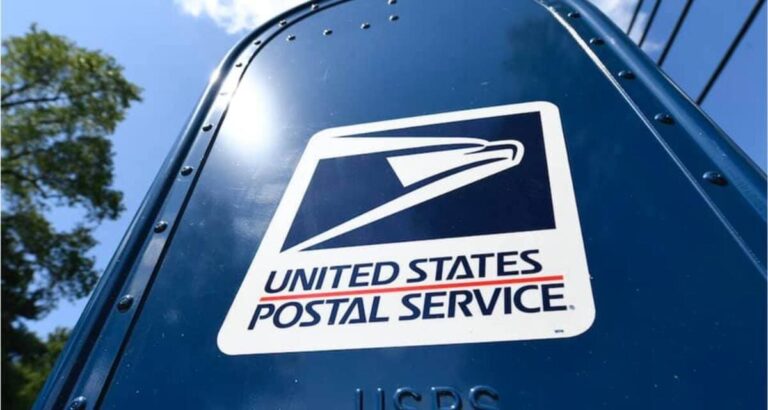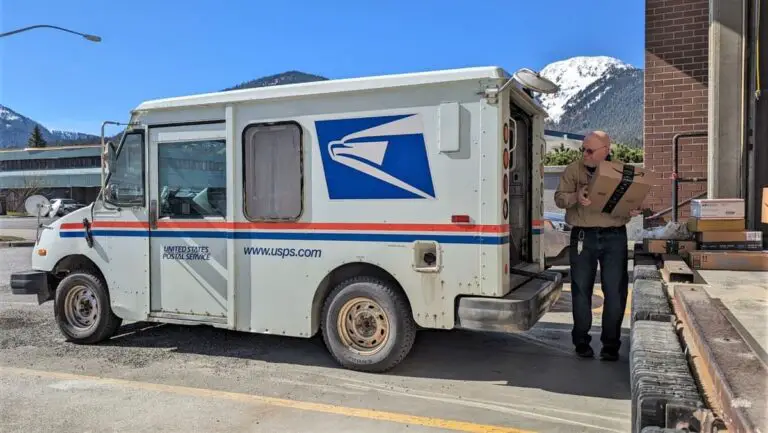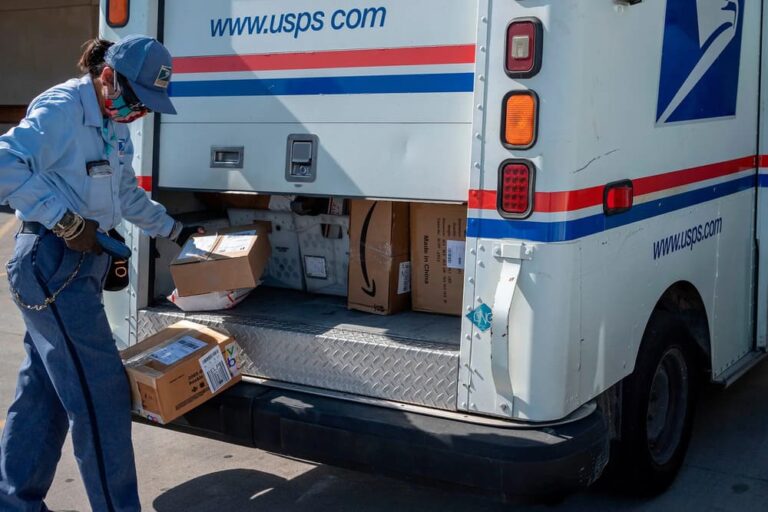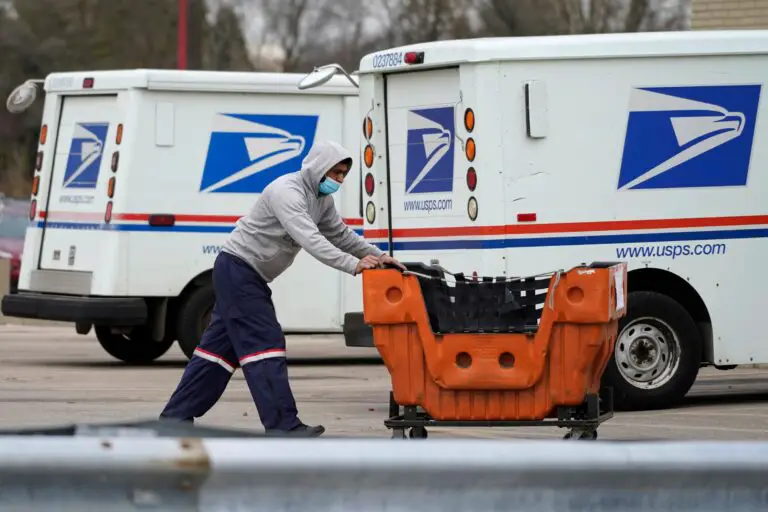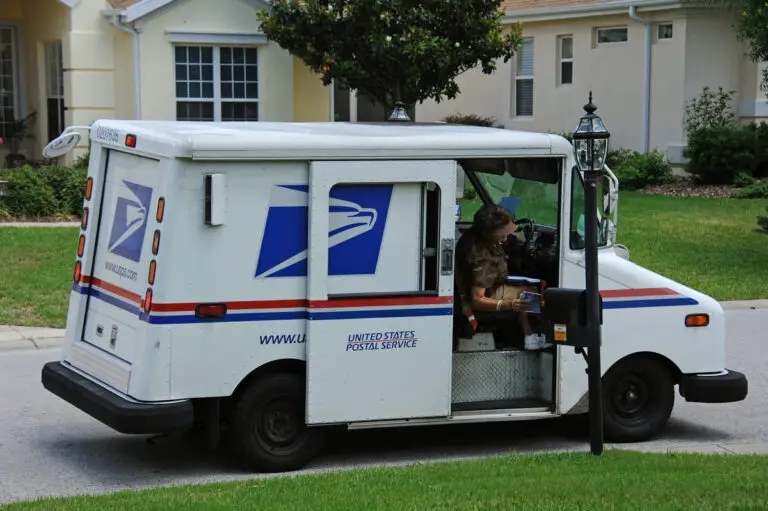How to Send Certified Mail & Why You Should Use This?

Have you ever needed to send sensitive documents or valuable items in the mail and wanted the peace of mind of knowing they reached the intended recipient? Sending mail via USPS Certified Mail provides crucial proof of mailing and delivery, along with other benefits that make it the right choice when you need that extra level of security and accountability.
So how exactly does Certified Mail work and what steps do you need to take to send something this way? This comprehensive guide covers everything you need to know to use USPS Certified Mail services correctly, including getting the right forms and postage, understanding your service options, tracking your delivery, and even sending certified letters and packages online.
The key purpose of Certified Mail is to give the sender verifiable confirmation that an item was successfully mailed and delivered, ensuring valuable mail reaches only the intended recipient.
Read on to learn:
- What Certified Mail is and its key benefits over regular post
- When you should use USPS Certified Mail services
- Step-by-step instructions for sending certified letters or packages
- How to track and receive delivery confirmations for your mail
- Online alternatives for sending certified mail and packages
Let’s start by reviewing the basics of what makes Certified Mail different than everyday post.
What is Certified Mail and Why Use It?
Certified Mail is a premium service offered by the United States Postal Service (USPS) that provides you with an official receipt and delivery record for your mail pieces. Unlike regular envelopes and packages that you drop in corner mailboxes, certified items have extra accountability requirements:
- The sender receives a mailing receipt with a unique tracking number
- A delivery signature and printed name are captured from the recipient
- Electronic verification records each time the item is scanned in the USPS system
Key Benefits of Certified Mail
There are several situations where using Certified Mail is recommended over regular post:
- Legal Mail or Time-Sensitive Documents: The mailing and delivery receipts serve as legal proof should any disputes arise over whether something was sent or received. Many attorneys rely on Certified Mail when serving important notices.
- High-Value Items or Sensitive Information: When mailing items like jewelry, stock certificates, or confidential documents, the chain of custody protections offered by Certified Mail give you peace of mind the items will safely reach only approved recipients.
- Record Keeping for Business: The electronic delivery verification makes Certified Mail ideal for businesses that need to keep meticulous records of communications to customers or vendors.
Other advantages include the ability to add on extra services like Restricted Delivery (limiting recipients) and choosing electronic or physical return receipts providing signature proof.
You can even track a Certified Mail letter or package in real time just as you would more expensive courier services. Overall it provides a lot of security and proof for a very affordable price.
Now that you understand the basics of Certified Mail, when might you need to use it instead of regular first-class or priority post?
When Should You Send Something by Certified Mail?
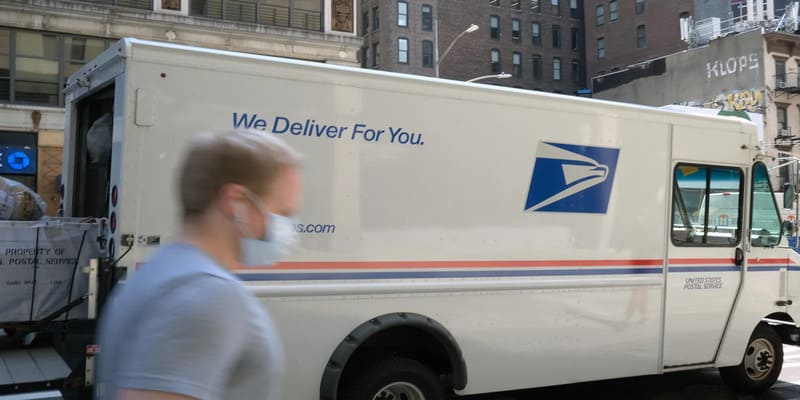
Here are some examples of good cases to pay a few dollars extra and use Certified Mail through USPS:
- Legal notices where proof of delivery date is vital such as summons
- Sensitive HR documents with private employee information
- High value items, especially if rare or irreplaceable
- Tax returns and filings to meet IRS deadlines
- Contracts or agreements where recorded receipt is key
- Business invoices to formalize transactions for records
- Recall notices or warnings where receipt verification is critical
- Final demands to debtors or other serious communications
Generally, if the documents are very important, time-sensitive, valuable, or confidential, choosing Certified Mail is wise. The delivery confirmation also creates a sense of urgency so recipients tend to open and respond more quickly.
For less critical items, regular first-class mail usually suffices. But Certified services provide inexpensive “insurance” making sure valuable mail actually reaches only approved recipients.
Now let’s go through the step-by-step process for sending certified letters or packages using USPS Form 3800.
Getting Started: Supplies You Need
Before you visit the post office to send something by certified mail, make sure you have the following:
Correct Mailing Materials
- Letters or envelopes of the appropriate size for your content
- Boxes, tubes, tyvek envelopes or other packaging if sending bulky items
- Cushioning like bubble wrap to protect fragile shipments
Forms and Stickers
- PS Form 3800: “Certified Mail Receipt” with unique tracking barcode
- PS Form 3811: Domestic “Return Receipt” to collect recipient’s signature
Postage or Stamps
- Postage stamps to match the certified mail class and weight
- Preprinted shipping labels with tracking barcodes will also suffice
For letters under 1 oz, a Forever stamp for $0.68 can be used with Certified Mail. Heavier letters cost more as do small priority mail packages.
With the right materials in hand, now let’s walk through the simple process for sending certified letters or packages at your local Post Office.
Step 1: Obtain and Fill Out PS Form 3800
To get started with Certified Mail, you first need to obtain copies of PS Form 3800 from your local post office branch. This is the official USPS form used for all certified mailings which contains:
- A unique 20-digit tracking barcode to follow your mail piece
- A mailing receipt that serves as legal proof of your sending
Follow these instructions to complete Form 3800:
- Clearly print the delivery address and return address in the allotted spaces
- Write identifying details like name or company in the “Article Number” section
- Remove the sticky backing and affix the barcode sticker to your envelope or package in the upper-right corner
Be sure to leave enough blank space for postage on the right side. On larger packages, the barcode can go below the delivery address instead.
This completes the basics, but next you may want to add extra services like return receipts when sending important certified letters or packages.
Step 2: Decide on Extra Services
One advantage of Certified Mail versus courier services is USPS offers various additional services to tailor delivery to your needs:
Return Receipt
The most popular upgrade is including a Return Receipt using PS Form 3811, commonly referred to as a “Green Card.” This provides physical proof the recipient accepted delivery.
With Form 3811, the mail carrier has the recipient sign the card which is mailed back to you as confirmation. An alternative is getting this signature proof through an electronic Return Receipt for $2.32 less.
Restricted Delivery
If you only want your certified letter or package signed for by the actual addressee (or their legal agent), you would select Restricted Delivery. Then the items can only be received by the intended party instead of anyone at the destination address.
There is also an Adult Signature variant where mail is only handed to recipients 21 years old, adding protection against minors signing for certain sensitive mailings.
Both Restricted Delivery and Adult Sigs have additional fees if chosen. You designate these extra services on Form 3800 before mailing.
Insurance
Note that while delivery is guaranteed, Certified Mail does not automatically include any loss insurance. However Priority Mail items ($100 insurance included by default) maintain that coverage when sent certified.
Now let’s get your letters or packages properly packaged and paid for at the post office counter.
Step 3: Select a Mail Class
You have choices regarding transit times and price when sending Certified Mail. The two main USPS mail classes eligible are:
- First-Class: Small letters, postcards, flats up to 13 oz
- Priority Mail: Letters, packages up to 70 lbs
Difference in Delivery Time
On average First-Class takes 1-5 days while Priority Mail delivers in 1-3 days but USPS does not guarantee a specific delivery date. So it’s more about speed rather than guaranteed arrival day.
Of course destination distance can impact actual delivery times too. But choosing Priority does ensure next business day processing which is faster overall.
Difference in Cost
First-Class is cheaper especially with smaller envelopes. You pay additional postage as the weight increases. At a certain point Priority becomes less expensive for heavier packages 3 lbs and up. Price your options to make the best choice.
Many regular customers print shipping labels certified and bulk discounts can apply. Okay, now everything is packaged and addressed. Let’s pay our fees and postage.
Step 4: Pay Postage and Fees
With your materials prepped, forms filled out, services selected – you’re ready to visit the post office counter and pay to send your Certified Mail:
- Specify sending “Certified Mail” with any extra services
- Present your letter, box, envelope, or tube
- Choose standard postage based on the mail class and weight
- Add fees for the Certified Mail service and options:
- Certified Mail fee: $4.40
- Return Receipt – Green Card: Additional $3.65
- Return Receipt – Electronic: Additional $2.32
- Restricted Delivery: Additional $11.65
- Adult Signature Required: Additional $6.75-$9.00
- Pay your total postage charges
The postal clerk will print a special stamp showing the fees paid and date mailed. Make sure to keep your receipt for records!
Step 5: Mail the Letter or Package
With postage now affixed and your receipt in hand, simply drop your envelope in a USPS collection box or hand it to your postal carrier.
If including the optional Return Receipt be sure to attach Form 3811 properly on the back before mailing.
Now USPS will scan your unique barcode when collecting the mail which records acceptance into their system. This completes the basic process of sending Certified Mail via post office!
Tracking a Certified Mail Delivery
One major advantage Certified Mail has over typical post is the ability to track your letter or parcel’s progress in real time much like a commercial courier’s package tracking.
To check the status, simply enter the Certified Mail’s 20-digit tracking number from your PS Form 3800 at USPS Tracking on usps.com.
The initial scan serves as your Proof of Mailing indicating USPS took possession. Subsequent scans will show handoffs between postal facilities verifying custody.
Once out for delivery, you’ll see the anticipated delivery date. After successful sign off, it will display “Delivered, Individual Picked Up at Postal Facility” along with the recipient’s printed name.
Having visibility to each tracking event and the final delivery proof gives valuable accountability. If something goes wrong, you can reference the tracking history to aid any claims or postal investigations.
Now let’s explore popular alternatives to sending certified letters and packages online without visiting post offices.
How to Send Certified Mail Online?
These days you can fulfill many post office tasks from your home or office desktop. A quicker way to send Certified Mail and track deliveries is using digital mail services from vendors like Stamps.com, EasyPost, or PostGrid.
These sites integrate directly with USPS systems while eliminating paperwork and post office trips. With a user-friendly dashboard, you simply:
- Upload your document images or enter addresses
- Print certified mail compliant labels and paperwork
- Attach the auto-generated barcode sticker and optional Form 3811 to your mail piece
- Schedule a carrier pickup from your location
You receive the same Proof of Mailing and Priority Mail protections for important mailings. Added benefits include:
- Integrations with email and other business software
- Automatic USPS scans show delivery activity
- Archiving features keep mailing receipts organized
- Return receipts display online upon confirmed delivery
For high volume needs, production mail software can directly print USPS forms and labels in batches. When convenience or speed are vital, online solutions enable sending certified letters and packages faster.
Tips for Choosing Certified vs Registered Mail
The USPS offers various extra services for important mail, but people often mix up Certified vs Registered Mail:
- Certified focuses on delivery proof like receipts and signatures showing successful transit
- Registered has more chain of custody security with tracking who handles the item
So Certified gives sender peace of mind the intended party received an item while Registered offers more protections ensuring valuables weren’t tampered with in transit by documenting every custody transfer between postal employees along the route.
Registered Mail
Given the additional staff time, forms, and record-keeping with Registered Mail, it carries fairly steep fees of $18.10 plus postage costs. But for very valuable or irreplaceable items, Registered can provide needed security, especially for transporting collectibles, stock certificates, jewelry, and sensitive documents in the mail.
You must visit a post office to send Registered as extra precautions are taken like sealing the packaging, using lockable pouches for transport between USPS facilities, and requiring in-person sign-off between personnel. So while Registered Mail is expensive, for rare, very valuable or sensitive items, it’s worth ensuring they safely reach recipients.
Certified Mail Security
For most cases though, the additional packing requirements, fees, and post office visits don’t justify going full Registered. Since Certified Mail pieces travel at the normal speed of First-Class and Priority without special handlings, costs are just a fraction of Registered making it very affordable.
Certified adds accountability, urgency, and recipient focus ensuring important letters and packages arrive without incident. For probably a hundred different letters you would send certified versus one fringe case requiring Registered Mail’s verifiable chain of custody.
So weigh your specific needs, value at risk, and importance of mail security. In most cases Certified Mail is perfectly suitable protection at great value. But Registered Mail remains an option when absolutely vital documents must arrive safely.
Common Questions About Certified Mail
If you still have questions about using USPS Certified Mail services correctly, here are answers to some frequently asked questions:
Is Certified Mail eligible for PO Boxes?
Yes absolutely. Write the recipient’s PO Box address clearly and process the certified mail normally. Upon delivery, the postmaster places a notice inside their box to collect and sign for the item.
How long does Certified Mail take to be delivered?
- First-Class Certified: 1 to 5 business days
- Priority Certified: 1 to 3 business days
Of course distance and specific timing can impact actual delivery date.
What if no one is available to sign for the Certified Mail?
If not delivered on first attempt, USPS will retry delivering two more times over several days before returning the item to sender undelivered.
Can Certified Mail be held at post office for pickup?
Yes, if shipment requires signature and recipient cannot receive mail at physical address, the post office will hold item for retrieval. Proper identification is required to claim hold for pickup items.
Is Certified Mail Insured against loss or damage?
While Certified Mail alone does not include insurance, if purchased as Priority service, up to $100 coverage still applies. Additional protection like priority insurance can be added if needed.
Final Thoughts
We’ve covered all the steps required from materials you need to how to track your Certified Mail items. While not difficult, following USPS rules ensures your letters or packages have proper evidence proving transit and verified delivery.
Some key takeaways around Certified Mail:
- Provides affordable delivery confirmation services
- Keep detailed mailing receipts as legal proof
- Upgrade with extra services like return receipts
- Online alternatives create digital workflow
The peace of mind knowing your valuable mail was delivered to only approved recipients makes any small added effort or fees absolutely worthwhile.
Hopefully this guide gave you confidence in navigating USPS Certified Mail for your most important post office communications! Let me know if you have any other questions.

